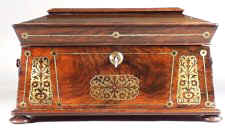 |
The caddy stands on turned rosewood feet. The tapering shape of the brass
inlay panels adds to the strong architectural impression.
|
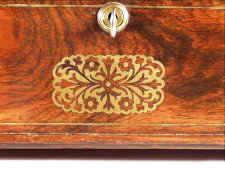 |
The caddy has a working lock and key.
The strong figuring of the rosewood is clearly visible.
|
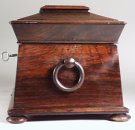 |
The caddy has turned rosewood drop handles.
|
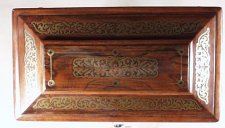 |
The composition of the top is strong. The inlaid brass panels are set off
by a further stringing of brass.
|
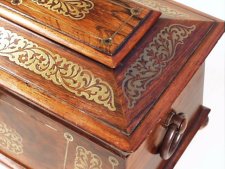 |
The caddy has clearly been looked after carefully
and has survived with its original polish which shows gentle patination.
The brass also is gently patinated without signs of pitting or
corrosion.
|
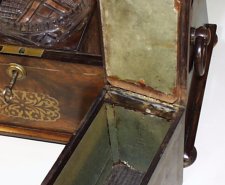 |
Unusually the lift out canisters are hinged from the back
rather than about a third in. By this design change a larger panel
of brass inlay was possible. Much of the lead lining has been
preserved.
|
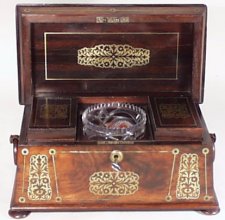 |
The central compartment has the original heavy hand blown and cut crystal
mixing bowl (see below).
The caddy stands on four turned rosewood feet.
The caddy is in very good original condition and has a working lock and
key. |
 |
Even the rosewood panel on the inside of the lid is inlaid. |
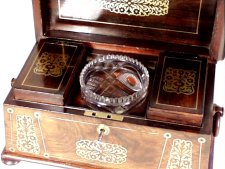 |
The interior contains two lift out containers also in
rosewood. The lid is lined in rosewood as are the facings and the bowl
holding compartment.
The bowl sits in a specially made recess, which
is faced with mitered and book matched rosewood.
The lift out containers are of solid rosewood construction.
|
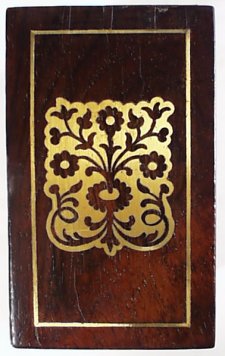 |
Close up of the lid of one of the canisters. The
brass inlay is extremely fine. |
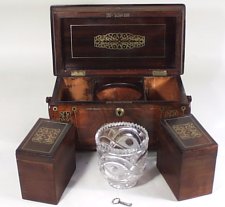 |
The interior bottom part of the caddy is lined in mahogany which is
edged in rosewood.
|
|
|
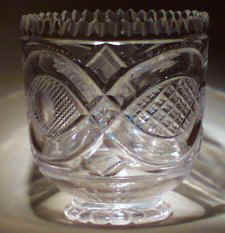 |
This bowl is the original heavy hand blown cut
crystal mixing bowl.
The curved flutings are particularly difficult
to cut.
|